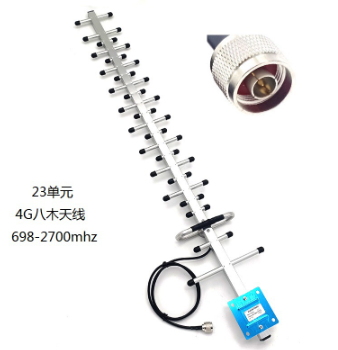Sri Lanka Omni antenna vs Sri Lanka yagi vs Sri Lanka directional antenna
In the field of wireless communication, the selection of antennas has a crucial impact on the performance of the system. Omnidirectional antenna, Yagi antenna, and directional antenna are three common antenna types, each with different characteristics and applicable scenarios. Below, I will provide a detailed analysis of the characteristics of these three antennas, as well as their advantages and disadvantages, to help everyone make more suitable choices based on their own needs.
Sri Lanka Omnidirectional antenna

Omnidirectional antenna, as the name suggests, refers to an antenna that can uniformly radiate and receive electromagnetic waves in all horizontal directions. The characteristic of this antenna is that it can provide the same signal strength within a 360 degree range, so it is very suitable for application scenarios that need to cover a wide range of areas, such as wireless network base station construction, indoor coverage, etc.
Advantages:
-Wide coverage: Omnidirectional antennas can provide uniform signal coverage on a horizontal plane, suitable for large-scale communication needs.
-Easy installation: Due to the lack of precise alignment, installation and debugging are relatively simple.
-Low cost: Generally, omnidirectional antennas have a simpler structure and relatively lower cost.
Disadvantages:
-Signal interference: In multipath environments, omnidirectional antennas may receive signal interference from different directions.
-Low security: Due to the signal being open in all directions, it may be captured by unexpected receivers.
2. Sri Lanka Yagi antenna

Yagi Uda antenna is an end emitting antenna composed of multiple parallel dipoles, typically consisting of a driving element and multiple passive reflectors and guides. This antenna is designed to enhance signal strength in a specific direction, thereby improving the directionality of received or transmitted signals.
Advantages:
-High gain: Yagi antenna has higher gain than omnidirectional antenna, which can provide stronger signal directionality.
-Strong directionality: By adjusting the number and position of reflectors and guides, the directionality of the antenna can be optimized, reducing signal interference.
-Moderate cost: Although more complex than omnidirectional antennas, the cost of Yagi antennas is still relatively low.
Disadvantages:
-Narrow bandwidth: Yagi antennas typically only operate within a narrow frequency range.
-Sensitive to the environment: Changes in physical size and surrounding environment may affect the performance of the antenna.
3. Sri Lanka Directional antenna

Directional antenna is an antenna designed specifically for communication in a specific direction, which has high directionality and can concentrate signals to or receive signals from specific areas. This type of antenna is commonly used for long-distance point-to-point communication, satellite communication, and professional radio systems.
Advantages:
-Extremely directional: Directional antennas can concentrate signals in very narrow beams, making them suitable for long-distance communication.
-Strong anti-interference ability: Due to signal concentration, it can reduce interference from other directions.
-Signal stability: Under ideal propagation conditions, directional antennas can provide very stable signal connections.
Disadvantages:
-Installation and debugging are complex: precise alignment with the target direction is required, and the installation and debugging process is relatively complex.
-High cost: Due to the complexity of structure and design, the cost of directional antennas is usually higher.
When selecting an antenna, it is necessary to decide based on the actual application requirements. If you need extensive signal coverage, omnidirectional antennas may be the best choice. If you need to increase the signal strength in a certain direction, Yagi antenna may be more suitable. If your goal is stable communication over long distances, directional antennas will be a better choice. No matter which antenna is chosen, it is necessary to consider the installation environment, budget, and performance requirements to ensure that the final communication effect can meet expectations.





